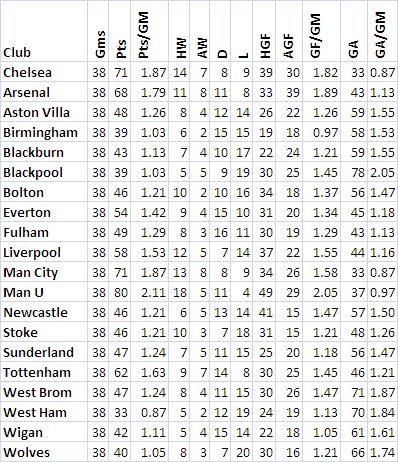By El Chupacabra
There will soon be enough early-season data in the MLS for El Chupa to turn his formidable intellect to analysis of actual play on the field. But with the resolution of the labor issue behind us and now the announced change in the designated player rule, El Chupacabra feels compelled to point out something he's noticed in just the first week of play.
The quality of play in the league as a whole, with some exceptions, is noticeably better this season than just a few years ago (this is a holistic rather than empirical observation, but El Chupa justifies it below). What's more, the new labor deal and the change in the designated player rule bode well for the league as a whole -- extremely well in El Chupa's opinion. In fact, we see Thursday's announcement expanding the designated player as a tipping point for the league.
First, let's give props to the owners and the single-entity model. The learned men of the Luchametric Institute for Advanced Predictive Science have railed against the single-entity model in the past, and we still find it problematic in many ways. But no one can argue that it has not produced material success.
Average attendance in the league in 2009 was 16,000 per game, with Seattle, LA, and Toronto all over 20,000. Philly and NY are both projected to approach 20,000 per game if not more this season. There are currently nine soccer-specific stadiums with two more scheduled to open in 2011 and five more proposed if expansion proceeds as planned. Of course, Seattle will never be taken entirely seriously until they are rid of the cursed artificial turf, but that will come with the continued support of their horde of vocal and knowledgeable fans.
So, now that MLS is established, has survived its first major labor dispute, has reached an acceptable and growing attendance average, it is time for further progress. The sudden and surprising change in the designated player rule is a major step forward. It allows for even more talent to come into the league. Let's be perfectly clear: this is all very, very good for the MLS and soccer fans of all stripes in the U.S.
The change in the designated-player rule will catalyze a trend that has been unfolding in the league over the last several seasons -- the steady increase of mid-level non-U.S. talent. Initially, the league had stringent rules about the number of non-US players allowed on rosters. This was one of several decisions the league made to avoid the pitfalls that doomed the NASL in the 1970s. This rule was gradually loosened and now the league looks more like the EPL than it does, say, the Mexican Primera Division. Specifically, clubs from our beloved Crew to teams in more cosmopolitan metro areas like LA and NY have a mix of US and international talent.
One key factor in the demise of the NASL was that all its stars were non-US has-beens, including the great Pele. But that's not the case in the MLS. Now that Beckham is, thankfully, done for most of the season, U.S. international Landon Donovan is the biggest star in the MLS, and the majority of non-U.S. MLS players are journeymen from Europe and south of the Border still in their prime. Throw into the mix young international players seeking playing time and better living conditions and even wages along with aging but not over-the-hill non-U.S. stars (see Schelotto, Willy) and you've got a league that is well into its adolescence. To sum, the MLS is not the NASL and never will be, and it is poised for its next period of growth..
Every serious soccer fan who follows the EPL or the other European leagues is familiar and quite comfortable with the international mix of the top teams in those leagues. Arsenal has a French coach, it's star is the injured Fabregas (Spanish international), and its roster looks like a meeting of the United Nations General Assembly. Further, the lower divisions in Europe, and even teams down-table in the top leagues, function much the way the minor leagues do in American Major League Baseball -- they're stocked with young players looking to get picked up by a top club.
Pay attention when big clubs start looking to smaller clubs for players either to sign outright or acquire on loan. Also, when you get a chance to watch an English first or second division club play an EPL team in the FA or Carling Cup competitions, notice just how young the players are on the lower division teams. In short, such teams serve as high-caliber developmental teams for the bigger clubs, giving young players a chance to play, blossom, and then be sold or transferred when they've proven their mettle. Even Bordeaux, who are currently at the top of the French Ligue 1 table, are losing their young star striker Marouane Chamakh, most likely to Arsenal.
What we are witnessing in the MLS is the emergence of the top U.S. professional league as an increasingly competitive proving ground for young U.S. and non-U.S. talent. MLS fans should be happy and satisfied with this progress. This is a natural step in the league's evolution toward true first-division status. El Chupa would certainly pay MLS prices to see the next Chamakh or Fabregas before he's snatched up by the Arsenals and Barcelonas of the world. And if the league continues to grow, our top talent that currently plays in Europe will give the MLS a much longer look.
Again, the MLS is not quite there, but the ability of teams to sign more designated players, combined with the luxury tax on such signings that distributes money to other clubs, has the potential to achieve a balance that will continue to move the league forward. MLS fans who long for more talent in the league--US or otherwise--should be very happy as the 2010 season unfolds as they will no doubt see the best professional soccer this country has witnessed since the 1994 World Cup.
Saturday, April 3, 2010
Subscribe to:
Post Comments (Atom)










 The Luchametric is a
The Luchametric is a 


















No comments:
Post a Comment